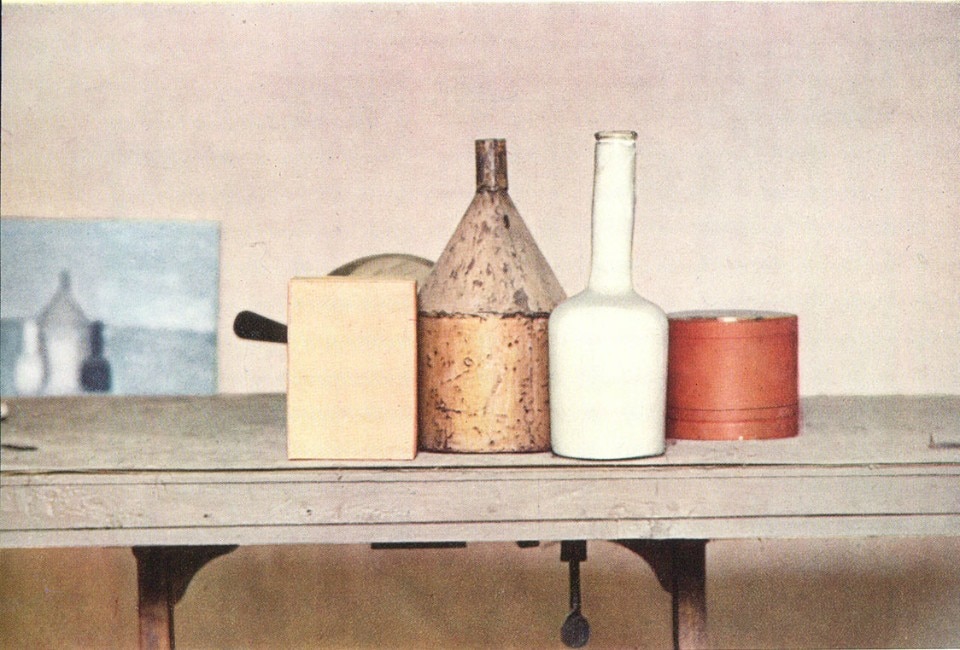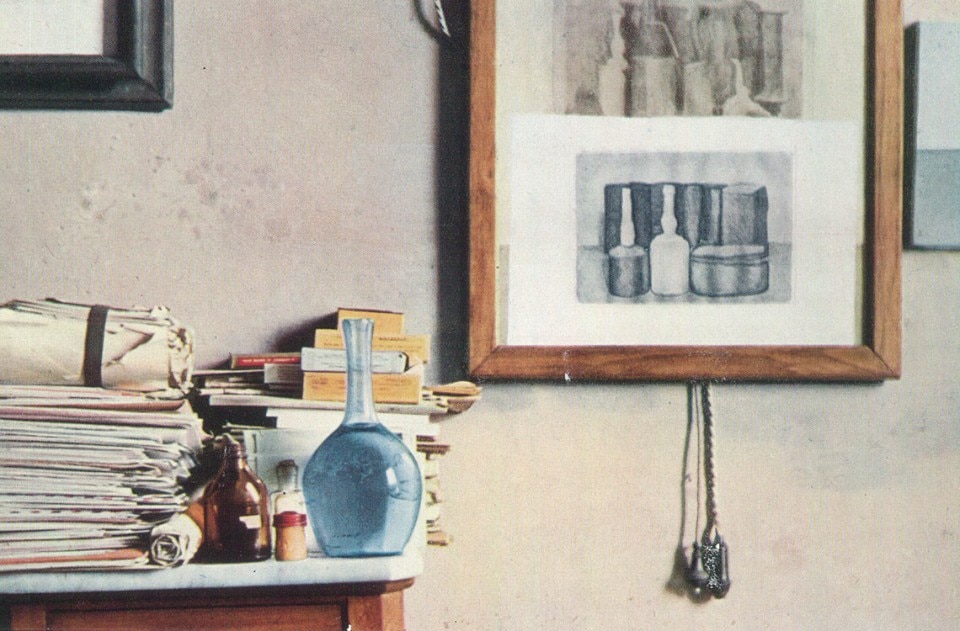In the summer of 1956, Leo Lionni tells Domus about his visit to Giorgio Morandi, in the house that is also his studio, in Via Fondazza. These are "quiet" rooms, where "real" objects - clear-glass bottles, red tin cans, small ceramic vases - have yet to become paintings. In addition to the words, Lionni wanted to the photographs he took when trying to capture Morandi's pictorial universe: the tranquility of Bologna's streets, the colours of the houses and the lights of the city are transformed, in the artist's studio house, into works of art. It is in the streets of Bologna that Lionni identifies the origin of Morandi's art, a painting of "calm simplicity".
Leo Lionni, A visit to Morandi, from Domus 319, June 1956.
The memory of my rare Sundays in Bologna has the clarity of a still life. If I were to paint it, it would be an architecture on a table too high to sit on, with a horizon almost at the eye level: a moral horizon that groups the objects and dresses them with equal dignity and beauty. I would paint a Morandi. I always leave Bologna with a solid sense of complete coherence, of completed relationships between art and man, between us and the city around us, for which a painting or a fragment of conversation can represent the whole.
I photographed Morandi's studio in Bologna because I wanted to document with a visual sequence the imperceptible passages from street, to home, to painting, from the dusty light of Bologna's colours to the new cold, non-museum light of the latest still lifes. The photographs will perhaps help to set Morandi's pictorial world in the reality that surrounds it.
In the spotted hills of Provence, one unexpectedly discovers Cézanne's realism, and one understands how his pictorial evolution focused on the search for his natural and simple way of painting nature. In the streets of Bologna, I was able to understand the origin of the very calm simplicity of Morandi's painting. Critics, who often associate morality and renunciation, put a Franciscan cassock over Morandi's work.
In the streets of Bologna, I was able to understand the origin of the very calm simplicity of Morandi's painting.
Instead, Morandi's serenity derives from the meticulous focus of the painter's personality on his surroundings, from his scrupulous search for coherence. It is because of this fact of integration (which is true artistic morality), and not because of formal historical juxtapositions - which all too easily give illusory answers - that Morandi ties himself to our painting tradition and keeps the door open to let us in.

Top image: Giorgio Morandi's studio in Bologna, from L. Lionni, A visit to Morandi, from Domus 319, june 1956. Photo: Leo Lionni.


